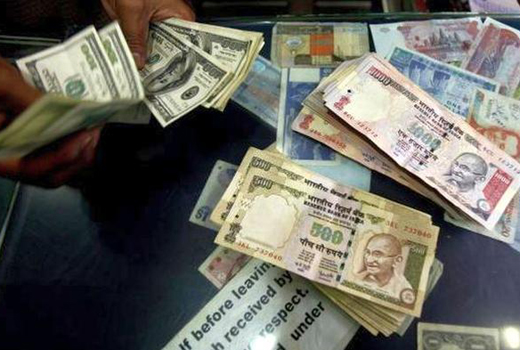India is now a $2-trillion economy
India is now a $2-trillion economy
Mangalore Today News Network
India’s GDP crossed the $2-trillion mark in 2014, according to data released by the World Bank in Washington late on Wednesday. After taking 60 years to reach the $1-trillion mark, India added the next trillion in just seven years.

The World Bank data also show that India’s gross national income per person rose to $1,610 (around Rs. 1 lakh) a year during 2014 from $1,560 the previous year. An analysis by The Hindu found that it would take India a little more than a decade to rise from its current ‘lower middle income’ category to the ‘upper middle income’ level.
India’s growth rate, at 7.4 per cent in 2014, makes it the fastest growing major economy along with China’s, which is a whopping $10.4 trillion in size. The Indian economy, at $2.06 trillion, has almost doubled in size since the financial crisis hit the country in 2008, and has more than quadrupled from the start of this millennium.

Despite its increase in per capita gross national income (GNI), India has remained in the ‘lower middle income’ category ($1,046-$4,125). Using the World Bank’s data, The Hindu extrapolated from India’s average annual growth rate in per capita GNI over the last decade — of 8.9 per cent — and found that it would become an ‘upper middle income’ country ($4,126-$12,735) in 2026, a little more than a decade from now. This will put it in the category China occupies now.
China, however, with a per capita GNI of $7,380 and an average annual growth in this parameter of 15.6 per cent, will leave the ‘upper middle income’ category by 2018 to become a ‘high income’ country like the U.S., the U.K., Germany and Japan. It will take India till 2039 to reach that level, at the assumed growth rate.
The World Bank’s data on gross national income per capita — the total value added by all producers within the country, plus income received from citizens working abroad, divided by the population of the country — show Bangladesh, Kenya, Myanmar, Tajikistan, Mongolia, Paraguay, Argentina, Hungary, the Seychelles and Venezuela have shifted their income categories for the better. For example, Bangladesh, Kenya, Myanmar, and Tajikistan are now ‘middle income’ countries from being ‘low income’ nations.
Gross national income measures the total value added by all citizens of a country, whether in India or abroad. Gross domestic product (GDP), on the other hand, is the total value of a country’s production and services within its boundary, whether by its nationals or foreigners.
“While we need to measure development progress in different ways, income-based measures, such as GNI, remain the central yardstick for assessing economic performance,” said Kaushik Basu, World Bank Chief Economist and Senior Vice-President.
“Our latest data show that in terms of this indicator, the world’s economic geography has changed a lot. In 1994, 56.1 per cent of the world’s population — 3.1 billion people — lived in the 64 low-income countries. In 2014, this was down to 8.5 per cent, or 613 million people living in 31 countries. Over the last one year itself, four nations crossed over to the lower-middle income category,” he said.
Courtesy: Thehindu
- Rethinking Drug Seizure Coverage: A Call for Health-Centred Narratives
- Substance abuse - A pressing concern among medical students
- China is winning the trade war without fighting
- Poll promises can become political nightmares
- While India sticks to death by hanging other execution methods vary across the world
- Spiking of drinks, a grave threat for students’ security
- Burden of drugs and substance use among university students in India
- Mangalore medic’s miracle in Bombay 1957
- Needed a national protocol for treatment of substance use disorders
- The Lingering Menace of Drug Abuse Among the Indian Youth—It’s Time for Action
- Need For ‘Students, Alcohol and Drugs’ survey
- New Synthetic Drugs Trapping Youth
- Mood Modifying Chips - Future of Drug Use
- Kashmir Bhavan in Bengaluru: A must visit place
- "MAI and I" Book of Angelic Emotions
- Draupadi Murmu - The New ’President of India’
- Anthony Ashram in the city grows a classic museum
- First College of Fisheries in India - A Golden Jubilarian
- Flushing Meadows - A Vintage Mansion
- The Colonel�s Bequest
- A Mangalorean PM and his RBI Governor Brother: The Extraordinary story of the Benegal Brothers
- There is no higher religion than Truth: Theosophical Society
- L�affaire - Ashu & Yiju of Mangalore
- Mangalore in Kowloon
- 1568 to 2018 AD: 450 years of Christianity in Mangaluru
- Vice President elect Naidu moves on from nadir to zenith, the phenomenal journey
- Embracing the Outdoors: How Heated Jackets Are Revolutionizing Cold Weather Activities
- Efficient and Sustainable Packaging Solutions with FIBCs
- The Hybrid Kilt Revolution | Where Tradition Gets Trendy
- Affordable Elegance | Embrace Style on a Budget with Cheap Kilts
- Unleashing Style and Functionality | Exploring Tactical Kilts
- Mangalore’s Heroic Lady marks 105th Birthday
- Santa the Christmas spirit
- Geriatric care: Mangalore strikes a fine balance
- The Don Who Made Two Empires to Clash
- CHITRAPUR SARASWATS - A Great Kanara Community
- Our new President Ram Nath Kovind’s significant journey to Rashtrapathi Bhavan
- Marriages made in heaven, big fat weddings made in India
- Eid insight - The giver of glad tidings
- CITY INFORMATION
- TRAVEL
- TOURIST INFORMATION
- HEALTH CARE
- MISCELLANEOUS




 Write Comment
Write Comment E-Mail To a Friend
E-Mail To a Friend Facebook
Facebook Twitter
Twitter  Print
Print 

